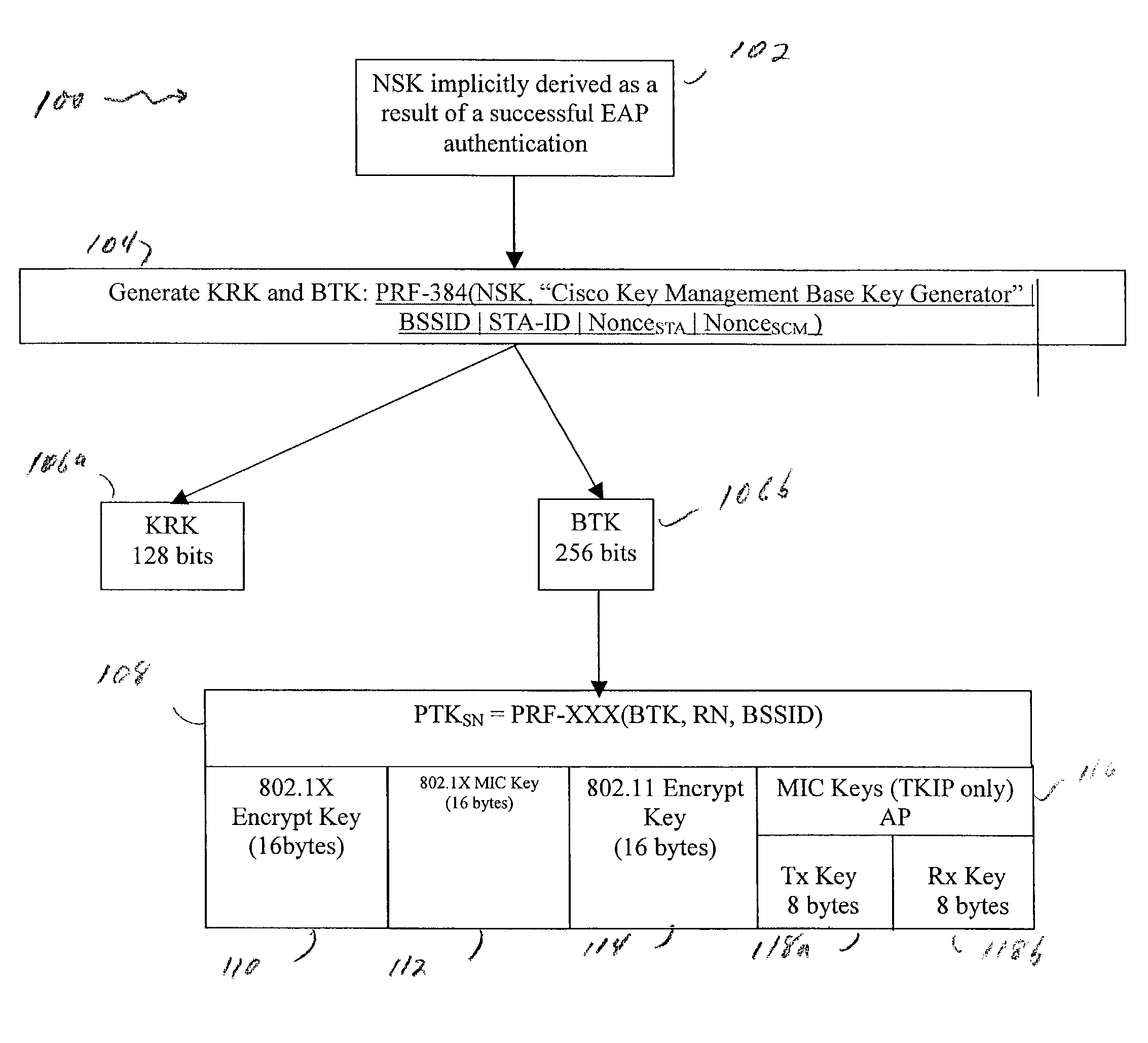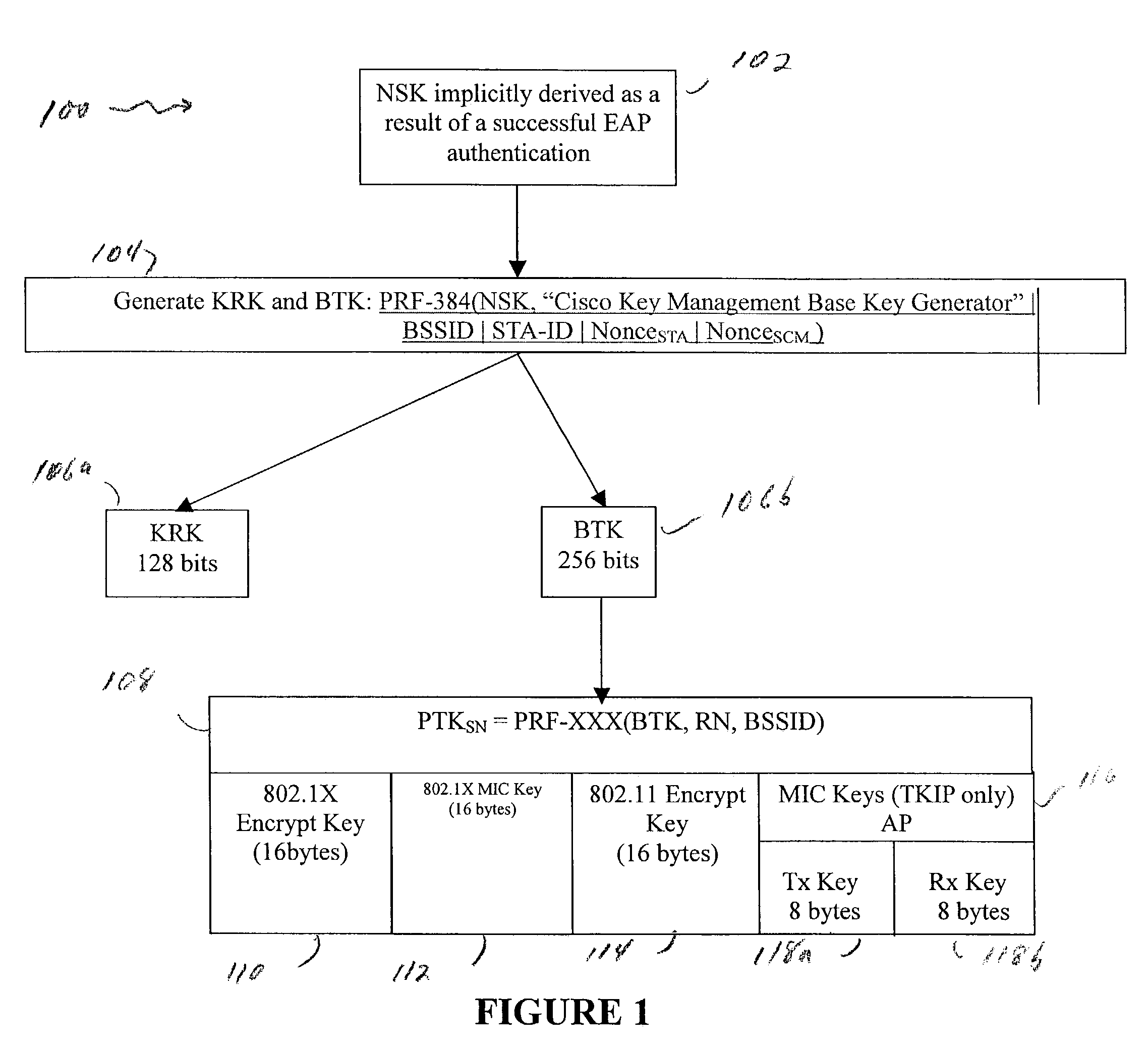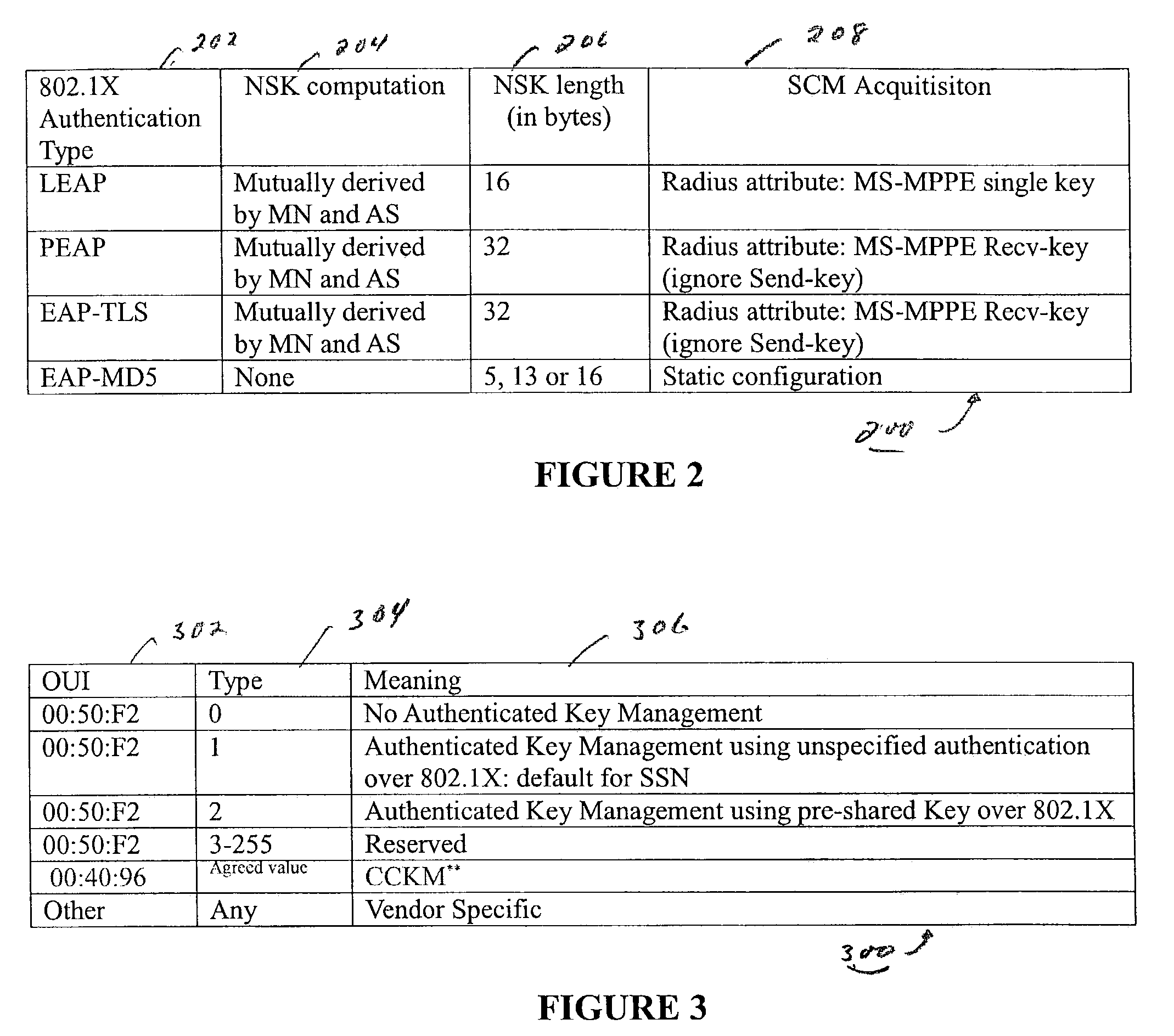802.11 using a compressed reassociation exchange to facilitate fast handoff
a reassociation exchange and compressed technology, applied in the field of wireless networking, can solve the problems of frequent (re)authentication, and achieve the effect of reducing both message and computational burden
- Summary
- Abstract
- Description
- Claims
- Application Information
AI Technical Summary
Benefits of technology
Problems solved by technology
Method used
Image
Examples
case 1
[1218] A parent AP or CM asynchronously disconnects a child node if a) the DPR for the child node is aged and discarded, b) the parent can no longer communicate with the child, or c) an administrative Deregistration Request is received for the child. If a parent node deletes a child AP, then the child AP and the entire sub tree rooted at the AP must reliably transition to the Unattached state.
[1219]If a DPR is aged and discarded, then it is guaranteed that the child AP has already transitioned to the Unattached state and no further action is required.
[1220]A parent AP can disconnect an 802.11 child, in its BSS, simply by the changing the child's 802.11 state to Disassociated and, optionally, transmitting a Disassociation (or Deauthentication) message to the station. At worst, the child node will discover that it is unassociated when it attempts to send an uplink frame.
[1221]If a parent SCM or AP disconnects a child AP, which is attached on an Ethernet secondary port, then it must ad...
case 2
[1222] An “Attached” child node becomes “Unattached” if a) it loses the link to its parent; b) it detects that its parent node has become Unattached; c) it detects a new parent “instance”; or d) its Node ID and current Path ID are in a Detached Node List in an advertisement message.
[1223]Each SWAN CM must maintain an internal “Instance Age”, as described in the section entitled “Topology State Information”. The Instance Age is entered into the Instance Age field in Advertisement Reply messages. A node's Instance Age is initialized to ‘0’ and is reset to ‘0’ each time the node transitions to the Unattached state.
[1224]An AP must maintain an internal “Attach Count” variable that is initialized to ‘0’ and incremented each time that the AP initially registers with the SCM. The Attach Count is copied into the Attach Count field in SCM Advertisement Reply messages that are transmitted on the AP's secondary ports.
[1225]A child node must save the Instance Age of its parent CM. A non-root AP...
PUM
 Login to View More
Login to View More Abstract
Description
Claims
Application Information
 Login to View More
Login to View More - R&D
- Intellectual Property
- Life Sciences
- Materials
- Tech Scout
- Unparalleled Data Quality
- Higher Quality Content
- 60% Fewer Hallucinations
Browse by: Latest US Patents, China's latest patents, Technical Efficacy Thesaurus, Application Domain, Technology Topic, Popular Technical Reports.
© 2025 PatSnap. All rights reserved.Legal|Privacy policy|Modern Slavery Act Transparency Statement|Sitemap|About US| Contact US: help@patsnap.com



